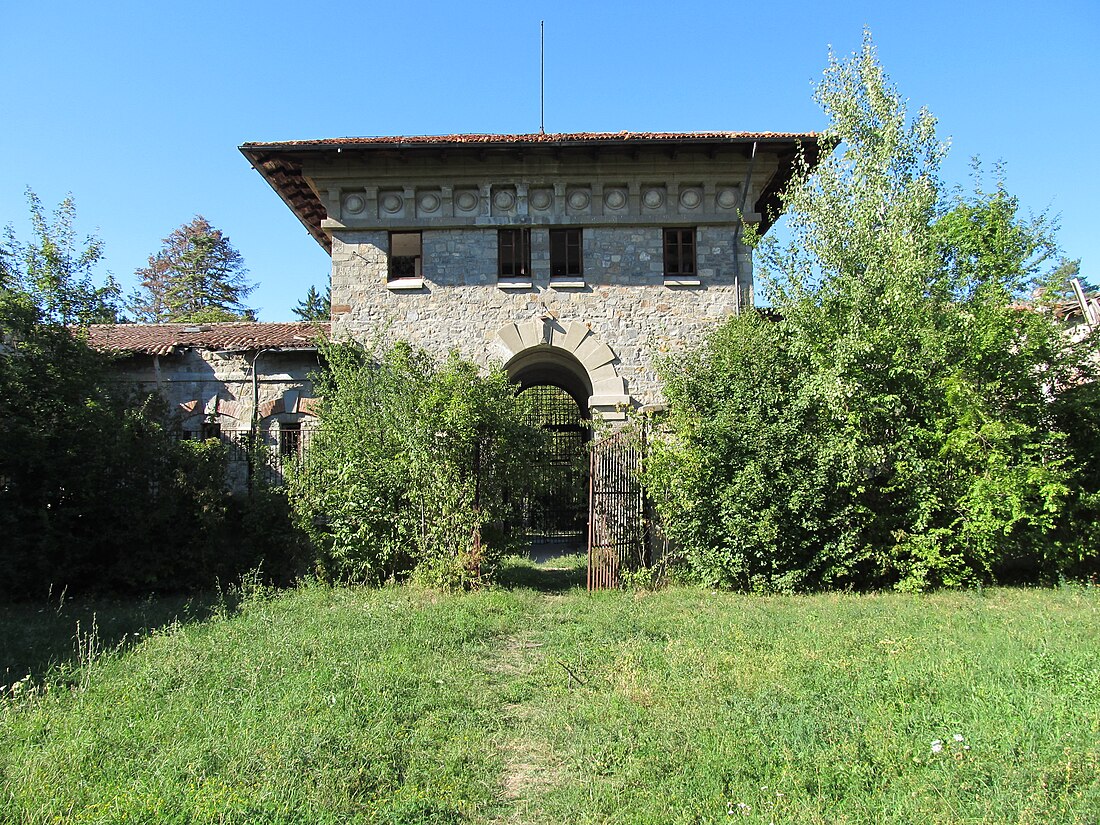Top Qs
Timeline
Chat
Perspective
Doftana prison
Prison in Romania From Wikipedia, the free encyclopedia
Remove ads
Doftana was a Romanian prison, sometimes referred to as "the Romanian Bastille". Built in 1895 in connection with the nearby salt mines, from 1921 it began to be used to detain political prisoners, among them Max Goldstein, a revolutionary whose detonation of an explosive device in the Romanian Senate chamber in December 1920 prompted widespread suppression and detention of political radicals, Gheorghe Gheorghiu-Dej, who was later the Prime Minister of Romania (1952–1955), and the Chairman of the State Council of Romania (1961–1965), and Nicolae Ceaușescu, who went on to be General Secretary of Romanian Communist Party (1965–1989), and the first President of Romania (1974–1989).[1]

The prison is situated close to the village with the same name, in the Telega commune of Prahova County.
Remove ads
Newspapers & Museums

From 1924 it is noted that the inmates began to write and edit a newspaper by hand using paper slips and smuggled pencils. It went by various names such as Doftana Red and Bolsheviks Handcuffed.[2]
During the communist period of Romania just after World War II, it was transformed into a museum, which has since been deserted due to lack of funds.[citation needed]. The composer Alfred Mendelssohn wrote The Destruction of Doftanas, a symphonic poem about it.
Not only Romanian communists were imprisoned here, also captured German and Soviet soldiers and Hungarian civilians.
Remove ads
Notable inmates
- Gheorghe Apostol
- Iosif Ardeleanu
- Max Auschnitt
- Emil Bodnăraș
- Béla Breiner
- Mihail Gheorghiu Bujor
- Nicolae Ceaușescu
- Corneliu Zelea Codreanu
- Petre Constantinescu-Iași
- Alexandru Drăghici
- Ștefan Foriș
- Gheorghe Gheorghiu-Dej
- Max Goldstein
- Mozes Kahana
- Șmil Marcovici
- Alexandru Moghioroș
- Serghei Nicolau
- Ion Niculi
- Dumitru Petrescu
- Gheorghe Pintilie
- Grigore Preoteasa
- Leonte Răutu
- Horia Sima
- Boris Stefanov
- Chivu Stoica
- Richard Wurmbrand
- Belu Zilber
Remove ads
References
External links
Wikiwand - on
Seamless Wikipedia browsing. On steroids.
Remove ads
